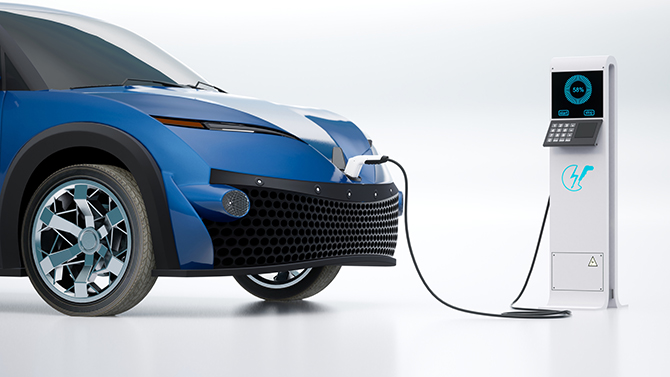Social Issues addressed by Sumitomo —Compass for the Future—
Epoch-making medical device offers hope to cancer patients—World’s first BNCT system with medical device approval
 Advanced medicine
Advanced medicineCancer remains a major scourge of humankind. In particular, tackling cancer that is difficult to treat with conventional methods remains an uphill struggle. However, certain state-of-the-art technologies are showing promise in the treatment of hitherto intractable cancers, and various initiatives are now underway.
Radiation therapy, chemotherapy, and surgery are the three major types of cancer treatment. Cancer that has locally recurred after radiation therapy is difficult to treat again with radiation therapy because of the risk that normal cells in the vicinity of the cancerous cells may be adversely affected. In these circumstances, an epoch-making method of radiation therapy that involves irradiation only once and is applicable to parts of the body previously subjected to radiation therapy has become available. Sumitomo Heavy Industries (SHI) manufactures and sells the world’s first BNCT (Boron Neutron Capture Therapy) system approved as a medical device.

With BNCT, a boron agent, which is easily accepted by cancer cells, is administered to the patient and a neutron beam is irradiated from outside. This causes the boron to react with neutrons and destroy cancer cells. BNCT differs markedly from conventional radiation therapy in two aspects: use of neutrons and use in combination with a medical agent.

The idea of using neutrons for cancer treatment has been around since the 1930s when the existence of neutrons was proven. In Japan, clinical research on neutron capture therapy began in 1968, which involved irradiating neutrons to cancer cells that have accepted certain elements. The boron compound mentioned above was subsequently developed and research has continued. However, because of the need for a nuclear reactor to generate neutrons, there was a high practical barrier to widespread use of BNCT in medical facilities.
SHI overcame this barrier by developing a cyclotron, which is a compact particle accelerator, for BNCT.

SHI began developing cyclotrons in the early 1970s. They were initially developed for use in physics research at universities and research institutes, but they subsequently showed growing promise for medical applications. From the 1980s onward, SHI developed and supplied cyclotrons for PET (positron emission tomography) for cancer diagnosis and proton cancer therapy systems.
Drawing on knowledge accumulated through the development of cyclotrons for medical applications, SHI achieved a compact cyclotron with higher current by placing the negative hydrogen ion generator outside the device. In addition, in order to prevent destruction of the target beryllium plate by the high heat generated when a proton beam is applied to it, SHI implemented several measures, such as moving the proton beam in a circular orbit to avoid buildup of heat on the surface of the beryllium plate, a highly efficient spiral water-cooling system, and controlling the thickness of the beryllium plate so as to minimize the beam’s effect on the plate.


After much trial and error, SHI succeeded in developing NeuCure, a compact BNCT system with a cyclotron. As a huge nuclear reactor is no longer required, this BNCT system can be installed in hospitals. The first unit of this system was delivered in 2009 to the Kyoto University Research Reactor Institute (now the Kyoto University Institute for Integrated Radiation and Nuclear Science), which was SHI’s development partner. Since then, the system has been delivered for clinical trials to Southern TOHOKU Hospital in Koriyama City, Fukushima Prefecture, in 2015, and to Osaka Medical College (now Osaka Medical and Pharmaceutical University) in Takatsuki City, Osaka Prefecture, in 2019.
In March 2020, SHI received approval from the Ministry of Health, Labour and Welfare for manufacture and sale of NeuCure as a new medical device, making it the first BNCT system in the world to gain approval as a medical device. Furthermore, in June 2020, national health insurance coverage of BNCT for cancer of the head and neck region was approved, and treatment has started at Southern Tohoku BNCT Research Center of Southern Tohoku Hospital and Kansai BNCT Research Center at Osaka Medical and Pharmaceutical University.

Currently, BNCT is indicated for cancers of the head and neck region that have recurred after standard treatments, such as surgery, radiotherapy, and chemotherapy, and are unresectable. For the application of BNCT to brain tumors (recurrent malignant glioma), SAKIGAKE comprehensive assessment consultation by the Pharmaceuticals and Medical Devices Agency (PMDA) is also underway (as of December 2021). In order to meet the expectations of as many patients as possible with difficult-to-treat diseases, SHI will continue its efforts to expand the application of BNCT, and furthermore, aims to expand the use of BNCT not only in Japan but also elsewhere in the world.


Read about initiatives to achieve a low-carbon society, aiming at net-zero greenhouse gas emissions since these emissions are implicated in global warming.

In view of ongoing globalization and the growing complexity of supply chains, companies need to respond appropriately to issues in supply chains.

The pace of workstyle reform is accelerating as the COVID-19 pandemic has prompted numerous companies to embrace novel ways of working.

For companies, the COVID-19 pandemic has brought the crucial importance of employee health into sharp focus.

Accelerating global warming poses serious business risks. Accordingly, companies need to formulate strategies and implement specific countermeasures from a medium- to long-term perspective.

Spurred by efforts to reduce environmental impacts and in line with increasing social needs, replacement of gasoline-powered vehicles with electric vehicles is accelerating.

Vigorous initiatives are afoot to tackle social issues by revitalizing communities and the interpersonal relationships that bind them together.

Poverty persists in contemporary Japan and the existence of child poverty is a grave concern.

In view of the continuing decline of Japan’s working age population, due to population aging coupled with a low birthrate, development of the next generation is an urgent issue.

The rapid progress in medicine in recent years is largely due to the efforts of not only universities and other research institutions but also of companies to develop cutting-edge technologies.

Numerous initiatives to promote industry and commerce at the regional and community level are underway, involving the use of renewable energy and thus contributing to decarbonization.

One-third of food produced is lost or wasted globally, amounting to about 1.3 billion tons per year. Food loss and waste is a pressing issue in need of a solution.

Companies are addressing a wide range of issues so that people and companies can coexist in harmony with the global environment.

In addition to natural disasters, there are various types of hazards whose nature, incidence and severity are changing with the times. Resilience and flexibility are indispensable in dealing with them.

Read about initiatives to achieve sustainable regional revitalization. The attributes and resources that each region can offer are leveraged to strengthen local economies and overcome the problem of population decline.